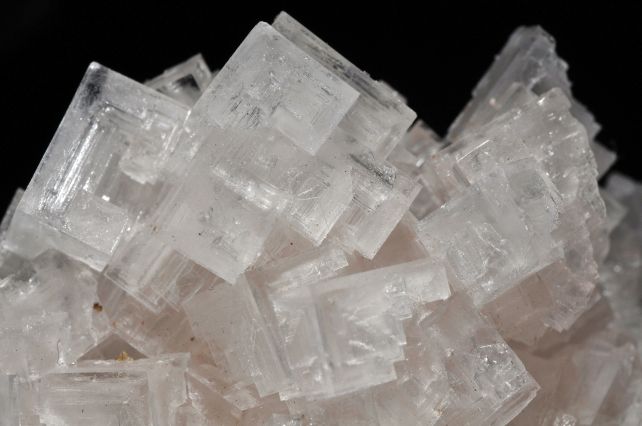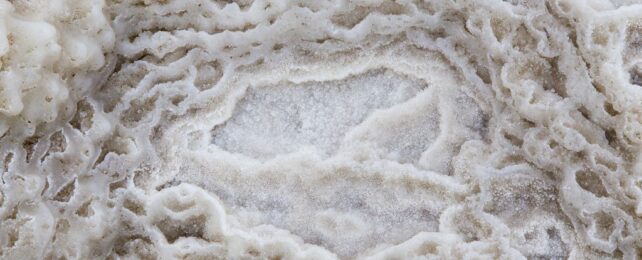Scientists have just probed into the last 150 million years of Earth's geological history by analyzing the chemistry of microscopic pockets of water preserved in crystals of sea salt.
By tracking the lithium content in marine halite – that's rock salt with a marine origin – geochemists Mebrahtu Weldeghebriel of Princeton University and Binghamton University and Tim Lowenstein of Binghamton University were able to reconstruct the history of tectonic movement on the seafloor.
This, by association, also provides a window into atmospheric conditions across time.
"There is a close link between ocean chemistry and atmospheric chemistry," Weldeghebriel explains. "Whatever changes happen in the ocean also reflect what's happening in the atmosphere."
Ocean water doesn't just contain salt. It's a chemical mixture, containing different minerals in quantities that reflect the different processes occurring at any given time. And marine halite may not seem particularly saturated, but it does contain tiny little pockets of water from the time the halite formed, effectively preserving a chemical record of the ocean at that time.

Weldeghebriel and Lowenstein obtained halite samples from formations across the US, Europe, Asia, and Africa with well-documented major ion chemistry. They used a laser drill to extract the water, for a total of 639 fluid inclusions from 65 halite crystals dating back 150 million years.
These samples were then analyzed to determine their lithium content. This is because, the researchers say, lithium is a tracer of hydrothermal activity: vents on the seafloor that release heat and chemicals into the ocean at the boundaries between Earth's tectonic plates.
Their tiny water droplets, the researchers say, show a seven-fold drop in lithium concentration over the last 150 million years, and a corresponding rise in magnesium to calcium ratios. This was because of a decrease in tectonic plate activity and planetary crust production, which resulted in less hydrothermal activity, too.

A consequence of this decresase in geological activity wouldn't have just been a drop in lithium in the water. Significantly less carbon dioxide would have been released into the atmosphere. In turn, this could have contributed to the cooling that produced the last ice age, which spanned the timeframe between 115,000 and 11,700 years ago.
This follows previous work from the pair and their colleagues, in which they showed strontium ratios in seawater time capsules also pointed to a decrease in hydrothermal activity over the same time period.
The analysis gives us some insight into the interconnectedness of Earth's systems, and the importance of plate tectonic activity in the regulation of Earth's hydrosphere and atmosphere, the researchers say.
"The oceans and atmosphere are connected to one another, and how they change is related," Lowenstein says. "Everything is connected."
The research has been published in Science Advances.
